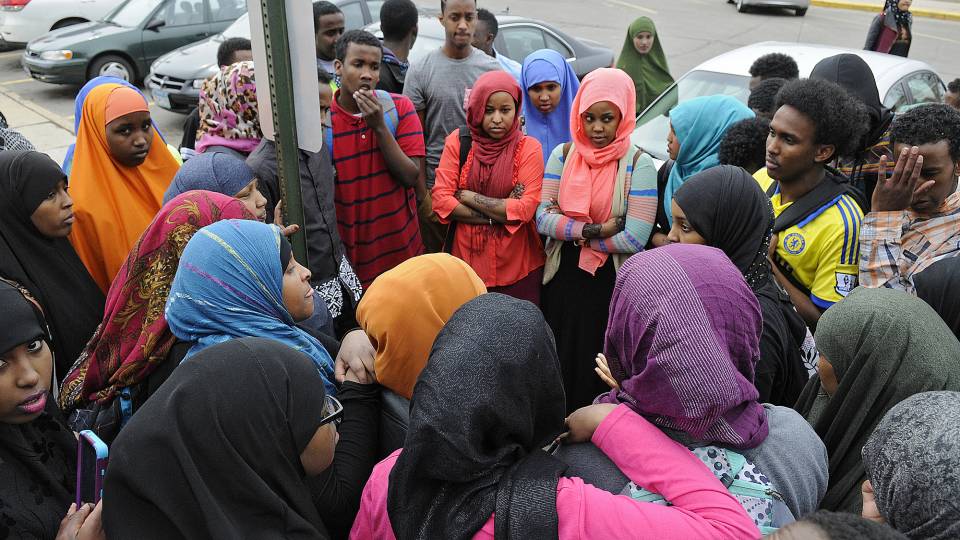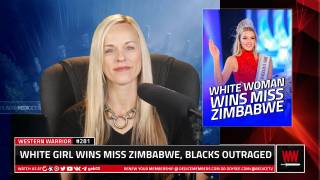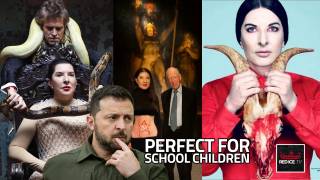St.Paul, MN Schools Wrecked by Diversity
Editor's Comment: What the author of this article fails to mention is that diversity, which means less White people, creates all sorts of problems. She cucks out and says that, "The greatest victims will be the poor and minority children in whose names these policies are imposed." Wrong. It is White children whose peaceful schools are forcefully being "diversified" who suffer the most. Before mass immigration and racial quotas, White schools didn't have gangs in their hallways who terrorized students and teachers and principals too weak to say anything in fear of being called a racist. There's a reason why no White parents send their children to nonWhite schools and it has nothing to do with poverty but everything to do with one race being more violent and prone to chaos than the other. There's a reason why no matter how much money is dumped into 'inner city' schools, White children still on average get better grades. Everyone knows when parents say they want access to 'better schools,' they mean White schools.
The city’s high schools have become menacing places where gangs prowl the halls and ‘classroom invasions’ are commonplace. It’s coming to your schools next.
Schools in St. Paul, Minnesota, are out for the summer, and kids are basking in the rare Minnesota sun. As families head to the lake, there’s an overwhelming sense of relief that school is over.
But this is not the usual end-of-school rejoicing, for it hasn’t been an ordinary year in St. Paul. Just days after the last school bell rang, a dramatic uprising of teachers, parents, and school board members ousted Superintendent Valeria Silva.
ilva’s approach to school discipline sparked the revolt. Her policies, initiated in 2010, launched the St. Paul schools on a downward spiral of chaos and violence. In December 2015, Ramsey County attorney John Choi labeled the situation “a public health crisis.” In 2015, assaults on teachers in St. Paul schools reported to his office tripled compared to 2014, and were up 36 percent over the previous four-year average.
Teachers, Students Fear for Their Safety
On Silva’s watch, the city’s high schools have become menacing places where gangs of out-of-control teens prowl the halls, and “classroom invasions” by students settling private disputes are commonplace.
Tumultuous brawls are a fact of life. Today, fights that “might have been between two individuals” can grow into “melees involving up to 40 or 50 people,” according to Steve Linders, a St. Paul police spokesman. Roving packs often attack individuals, and police have had to use chemical irritants to break up what they call “riots.”
Teachers fear for their safety. In the last school year, a vicious student assault landed one in the hospital with a traumatic brain injury. Another was punched repeatedly in the chest, while another required staples for a head wound. One high school has issued emergency whistles to teachers and assigned a guard to every floor. A teacher who was crushed into a shelf in a classroom invasion now instructs her students to use a “secret knock” to enter her classroom, according to City Pages.
ilva’s approach to school discipline sparked the revolt. Her policies, initiated in 2010, launched the St. Paul schools on a downward spiral of chaos and violence. In December 2015, Ramsey County attorney John Choi labeled the situation “a public health crisis.” In 2015, assaults on teachers in St. Paul schools reported to his office tripled compared to 2014, and were up 36 percent over the previous four-year average.
Teachers, Students Fear for Their Safety
On Silva’s watch, the city’s high schools have become menacing places where gangs of out-of-control teens prowl the halls, and “classroom invasions” by students settling private disputes are commonplace.
Tumultuous brawls are a fact of life. Today, fights that “might have been between two individuals” can grow into “melees involving up to 40 or 50 people,” according to Steve Linders, a St. Paul police spokesman. Roving packs often attack individuals, and police have had to use chemical irritants to break up what they call “riots.”
Teachers fear for their safety. In the last school year, a vicious student assault landed one in the hospital with a traumatic brain injury. Another was punched repeatedly in the chest, while another required staples for a head wound. One high school has issued emergency whistles to teachers and assigned a guard to every floor. A teacher who was crushed into a shelf in a classroom invasion now instructs her students to use a “secret knock” to enter her classroom, according to City Pages.
As Silva’s new discipline regime took hold, reading and math scores dropped and headlines about assaults on teachers appeared with disturbing frequency. Yet instead of reconsidering, her administration moved quickly to control public relations damage. For example, district officials attempted to silence teacher critics by accusing them of having “issues with racial equity,” one veteran teacher told City Pages. Benner, an outspoken critic who is black, told City Pages that district leaders pushed him out of his school and fired his aide. Benner now works at a charter school.
In December 2015, teachers threatened to strike over mounting safety concerns. “Do students and staff deserve to come to work every day and not expect to be assaulted?” demanded Denise Rodriguez, president of the St. Paul Federation of Teachers. “Teachers want to know who has our back with this violence.” Meanwhile, St. Paul families of all races began flooding into charter and suburban public schools, taking millions of dollars in state aid with them.
Now the Same Rules are Nationwide
In November 2015, St. Paul voters overwhelmingly elected a majority of Silva opponents to the school board. Several months later, parents launched a petition demanding Silva’s resignation, and black, white, and Asian community leaders issued the same call in the Pioneer Press. Finally, on June 21, 2016, the school board announced Silva’s departure after buying out her contract at a cost of almost $800,000.
Not everyone was happy: School board member Jean O’Connell promptly resigned, protesting what she called the board’s “destructive and cynical” behavior. “We must refuse to allow the board to let up on racial-equity efforts,” she wrote in the Minneapolis Star Tribune.
Fortunately for St. Paul’s children, the city’s parents and teachers were able to hold Silva democratically accountable. But the federal government is now imposing Silva-style “racial equity” discipline policies on school districts around the country under a “disparate impact” interpretation of civil rights law. When these districts experience increased violence and disorder, citizens there will be powerless to stop the debacle.
The greatest victims will be the poor and minority children in whose names these policies are imposed, but who will now be expected to learn in a chaotic environment where learning has become impossible.






















